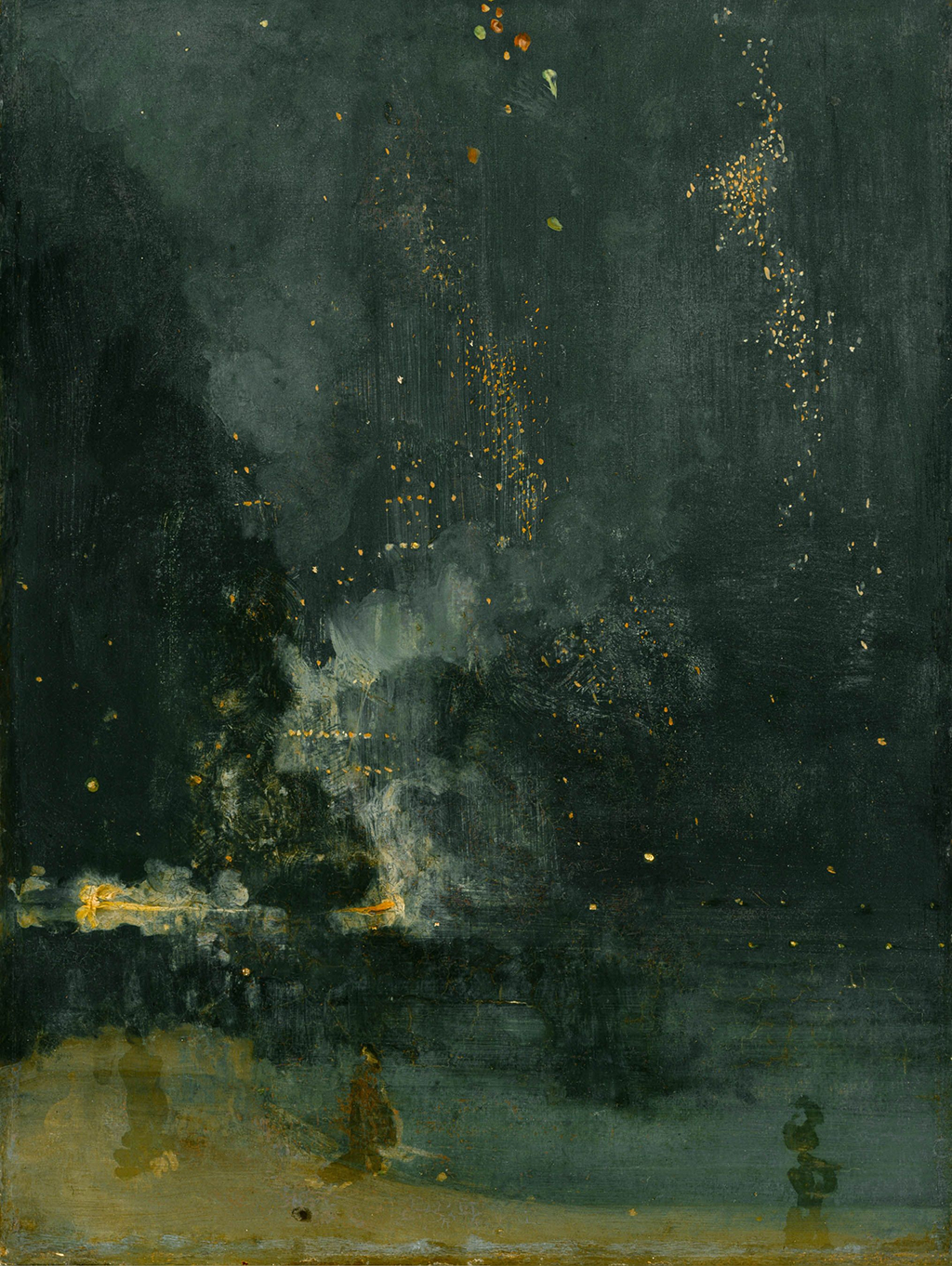The evocatively-named Nocturne in Black and Gold - The Falling Rocket was painted by James Abbott McNeill Whistler in 1875.
This was sixteen years after he arrived in Britain from Massachusetts, U.S.A. Early influences had been Velázquez, Rembrandt, and Greek sculptures, evident in his first works around London's docklands, but by this time, the artist had moved away from early realism towards abstraction and impressionism, embracing the Aesthetic Movement and its cry of Art for Art's Sake.
Whistler used the term Nocturne to portray the atmosphere of the area around the Thames at night, by associating it with a musical term. This was one of six renditions of Cremorne Gardens in Chelsea, close to the artist's home in Lindsey Row, and a popular rendezvous for a wide variety of entertainments and some restaurants. Rather than record this in meticulous detail, he sought to convey the ambience with swift brushstrokes in dusky greens and blues, and dashes of colour that hinted at the excitement of fireworks over the water. This encouraged each viewer to use their imagination, so that they could take away a unique and personal experience, which they might then interpret differently on another visit.
The paintings were actually executed from memory back in the studio, using turpentine, copal and linseed oil to make a thin mix that enabled the artist to paint fast in oil, applying it thinly and wiping it away until he was happy with it. Here, thin washes suggest smoke against a night sky, with directed drips of paint representing the nightly fireworks, while stronger strokes gave life to the revellers. In this way, Whistler was able to convey the mood of the evening and how it had affected him. Nocturne in Black and Gold - The Falling Rocket, now owned by the Detroit Institute of Arts, is considered one of the best examples of his abstraction period, but this wasn't always the case, with some early visitors finding his technique too casual (the artist actually sued John Ruskin over a negative review). However, today James Whistler is considered important in the development of art. He influenced the art of such painters as Manet and Degas, while in modern art, his method of aiming paint at his canvases was taken up by Jackson Pollock and others.





